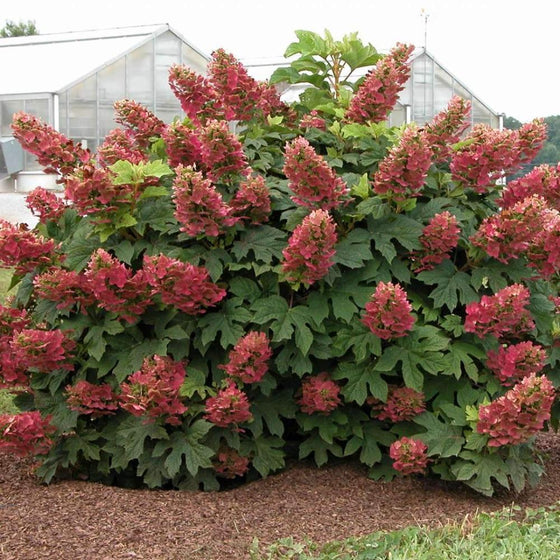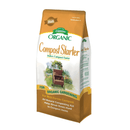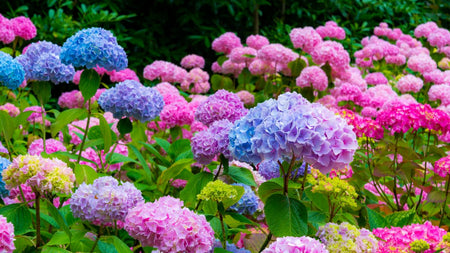
Images Depict Mature Plants
Ruby Slippers Hydrangea – Compact Oakleaf Hydrangea with White to Ruby-Pink Blooms
Brilliant color, compact form, and native roots.
The Ruby Slippers Hydrangea (Hydrangea quercifolia ‘Ruby Slippers’) is a small but stunning variety of oakleaf hydrangea that delivers massive, color-changing flower clusters and four seasons of landscape interest. Starting as bright white blooms in early summer, each flower matures into shades of rose, ruby-pink, and deep red by fall—providing a rich display of shifting color throughout the season.
Perfect size, endless versatility.
Reaching just 3 to 4 feet tall and wide, Ruby Slippers is the ideal choice for small gardens, foundation beds, or container plantings. Its compact, rounded shape fits neatly into any landscape without crowding nearby plants. The deeply lobed, oak-like leaves turn burgundy-red in autumn, creating a striking contrast against its exfoliating bark, which provides winter texture and appeal.
Native, hardy, and low-maintenance.
As a U.S. native species, Ruby Slippers Hydrangea is highly adaptable to a wide range of soil conditions and climates. It’s drought-tolerant, deer-resistant, and disease-resistant, making it one of the most dependable flowering shrubs for home gardeners and professionals alike. Hardy in USDA Zones 5–9, it performs beautifully in both full sun and part shade—particularly when protected from harsh afternoon heat in southern climates.
A landscape classic in miniature.
Ruby Slippers embodies everything gardeners love about oakleaf hydrangeas in a compact form that’s perfect for modern landscapes. From its vibrant bloom transitions to its richly textured foliage and bark, this shrub adds four-season interest with minimal effort. It’s the perfect choice for creating long-lasting curb appeal and a pollinator-friendly habitat in any setting.

| Hardiness Zone: | 5-9 |
|---|---|
| Mature Width: | 3 to 4 Feet |
| Mature Height: | 3 to 4 Feet |
| Classification: | Broad leaved deciduous shrub, mid-summer flowering |
| Sunlight: | Part sun to part shade |
| Habit: | Upright, densely branched |
| Flower Color: | White flowers in summer turn red in fall |
| Foliage: | Dark green turning reddish mahogany in the fall |
| Soil Condition: | Any well drained soil |
| Water Requirement: | Water well until established |
| Uses: | Extremely attractive when used as a focal point in the woodland border, mass planting, specimen planting, or container planting |
How to Care for Ruby Slippers Hydrangea
Be sure to read our planting instructions to ensure a healthy and happy Ruby Slippers Hydrangea plant for years to come!
How do I plant Ruby Slippers Hydrangea?
Plant in well-drained, fertile soil enriched with organic matter. Choose a location with morning sun and afternoon shade, especially in warmer climates. Dig a hole twice the width of the root ball and place the plant so the top of the root ball is level with the soil surface. Backfill, water thoroughly, and apply a 2–3 inch mulch layer to maintain moisture and regulate temperature. Avoid heavy clay or waterlogged soil, as hydrangeas prefer consistent but not soggy moisture.
How often should I water Ruby Slippers Hydrangea?
Keep the soil evenly moist during the first growing season to establish a strong root system. Once mature, Ruby Slippers becomes moderately drought tolerant, needing only supplemental watering during dry spells. Mulching helps retain moisture and keeps the roots cool during summer. Water deeply at the base to avoid wetting foliage, which helps prevent leaf spotting.
When and how should I fertilize Ruby Slippers Hydrangea?
Feed in early spring using a slow-release, balanced fertilizer (10-10-10). Avoid over-fertilizing, which can lead to lush foliage at the expense of blooms. A light midseason feeding can promote larger flower clusters and richer color transformation. Incorporate compost annually for improved soil structure and nutrient retention.

When should I prune Ruby Slippers Hydrangea?
Prune lightly after flowering in mid to late summer, as this hydrangea blooms on old wood. Remove spent flower clusters and any dead or crossing branches to maintain shape and airflow. Avoid heavy pruning in spring, which can remove flower buds and reduce the following season’s blooms. With proper care, your Ruby Slippers will rebloom beautifully year after year.

















